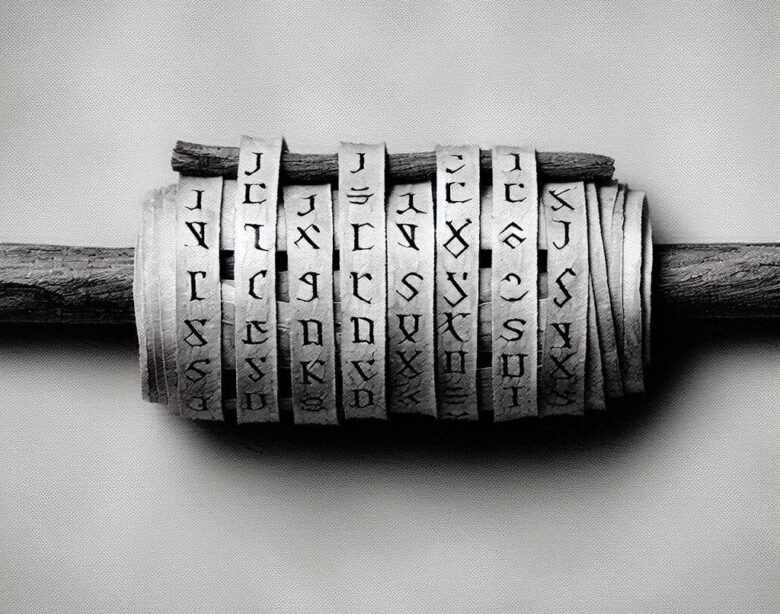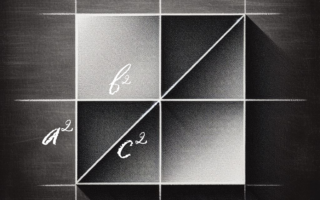The Scytale: An Ancient Encryption Device
Cryptography, the art of securing communication, has a long and fascinating history. From ancient methods used to protect military secrets to modern-day encryption algorithms safeguarding digital data, cryptography has been integral to human society. One of the earliest known encryption devices is the scytale, a tool used by the ancient Spartans for secure military communications. The scytale’s simplicity belies its significant influence on the history of cryptography, marking one of the first known applications of transposition ciphers—a technique still in use today.
Origins of the Scytale
The scytale was first documented in ancient Greece, specifically used by the Spartans, who were known for their military prowess and discipline. The Spartan military, arguably one of the most powerful forces in the ancient world, needed a secure way to transmit sensitive information during their campaigns. The scytale was developed as a practical, portable device to encode and decode messages quickly and efficiently.
The word “scytale” (or sometimes “skytale”) derives from the Greek word “σκυτάλη” (skytalē), meaning “baton” or “staff.” This was an apt name, as the device itself consisted of a simple wooden rod around which a strip of parchment or leather was wound. The earliest documented use of the scytale dates back to the 5th century BCE, during the Peloponnesian War, when Spartan generals needed a way to send secret messages without fear of interception.
How the Scytale Functioned
The scytale was an encryption device that relied on the transposition cipher, a technique where the letters of a message are systematically rearranged to obscure the original content. Unlike a substitution cipher, which replaces letters with others, a transposition cipher involves changing the order of the letters. The scytale was particularly efficient at applying this method.
Here’s how it worked:
- Encoding: To encode a message, the sender would take a strip of parchment, leather, or cloth and tightly wrap it around a cylindrical rod, or scytale. Once wrapped, the sender would write the intended message along the length of the rod, ensuring that the letters aligned properly. After the message was written, the strip was unwrapped from the scytale, resulting in an apparently random sequence of letters.
- Decoding: To decode the message, the recipient needed an identical scytale. By wrapping the strip around the scytale in the same manner as the sender, the recipient would see the letters realign and the original message become legible.
For example, if the message “ATTACK AT DAWN” was written on the strip, when the strip was unwrapped from the rod, the letters would appear jumbled. Without the correct rod to realign the letters, the message would be incomprehensible.
Security and Limitations
While the scytale was effective in ensuring some degree of secrecy, its security was based on the assumption that both the sender and the recipient possessed rods of the same diameter. If an enemy managed to obtain a scytale of the same dimensions or simply guessed the rod’s size, they could easily decipher the message. Nonetheless, for its time, the scytale was an ingenious tool that provided a level of encryption suitable for military communications in an era where more advanced techniques were unavailable.
The simplicity of the scytale also made it useful in the field. Soldiers could easily carry the lightweight rods, and the encoding/decoding process was fast and efficient. This made the scytale particularly appealing for the fast-paced demands of warfare, where time and secrecy were both crucial factors.
The Scytale’s Role in Military History
The scytale’s primary use was in military communications, particularly in the Spartan army. In an age when messages could be intercepted by enemy forces, the scytale provided a means of protecting strategic information from prying eyes. The Spartans were known for their strict discipline and organized military tactics, and the scytale fit into their broader strategy of ensuring operational secrecy.
While much of what we know about the scytale comes from ancient Greek texts, historians believe it was used to send important military orders, troop movements, and tactical plans. The Spartans’ dependence on secrecy was crucial in their military campaigns, particularly against their rival city-state, Athens, during the Peloponnesian War.
Although the scytale was most famously used by the Spartans, other ancient Greek city-states may have also adopted similar encryption techniques, either directly influenced by the Spartans or through their own military innovations. The use of encryption in warfare, as demonstrated by the scytale, highlights the importance of cryptography long before the invention of modern computers and algorithms.
The Evolution of Cryptography and the Legacy of the Scytale
While the scytale is a relatively simple encryption device compared to modern cryptographic methods, its impact on the history of cryptography is profound. The scytale represents one of the earliest examples of the transposition cipher, a fundamental concept in the field of cryptography. Although more sophisticated encryption techniques have been developed over the centuries, transposition ciphers remain a foundational part of the cryptographer’s toolkit.
Early Cryptographic Techniques
The scytale’s use of transposition ciphers is just one example of how ancient civilizations experimented with ways to protect information. For example, the Caesar cipher, used by Julius Caesar in Rome around the 1st century BCE, is another early encryption method, which used a simple substitution cipher to shift letters by a fixed number of positions in the alphabet. The Atbash cipher, used by the ancient Hebrews, is another example of substitution encryption from this period.
The scytale’s role in the development of cryptography can be seen as the beginning of an ongoing search for more secure and effective encryption methods. It also highlights how cryptography has always been closely tied to military needs, where the protection of information can mean the difference between victory and defeat.
The Influence of the Scytale on Modern Cryptography
In modern cryptography, the principles of the scytale live on in more sophisticated encryption techniques. The concept of transposition is still used in block ciphers, where plaintext is divided into blocks and scrambled through a series of transpositions and substitutions. While the specific method of encryption has evolved, the basic idea of rearranging data to obscure its original meaning remains a core principle in modern cryptographic algorithms.
Additionally, the scytale’s emphasis on key-based encryption—where both the sender and receiver need a matching key (in this case, the scytale rod of the same diameter)—is mirrored in modern cryptographic systems, such as public-key cryptography. Although modern keys are digital rather than physical, the underlying concept of shared keys between sender and receiver for secure communication remains unchanged.
The scytale also highlights the balance between simplicity and security in cryptography. While the scytale was secure enough for its time, it would be easily broken by modern standards. This balance between usability and security continues to challenge cryptographers today, as they seek methods that are both secure and practical for widespread use.
The Scytale in Popular Culture and Education
The scytale has also found its way into popular culture and education as an example of early cryptography. Its simplicity makes it a favorite demonstration tool in classrooms when introducing students to the basics of encryption and decryption. By showing how an ancient device like the scytale was used to secure messages, teachers can help students appreciate the historical roots of modern cryptography and how these ancient techniques laid the groundwork for the complex algorithms we use today.
In popular culture, the scytale has appeared in various historical novels, films, and even games that focus on ancient warfare and espionage. Its role as an iconic symbol of early cryptography ensures that it remains an enduring part of the narrative surrounding the history of secure communication.
Conclusion
The scytale, while simple in design, had a profound impact on the history of cryptography. As one of the earliest known encryption devices, it introduced the concept of transposition ciphers, which remain relevant to this day. The scytale’s use in Spartan military communications illustrates how cryptography has always been closely linked to the need for secure information transmission, particularly in times of war.
Though encryption has evolved significantly since the time of the scytale, the basic principles it demonstrated are still at the heart of modern cryptographic methods. The scytale stands as a reminder of how ancient civilizations, with their limited technological resources, managed to develop clever and effective ways to safeguard sensitive information—setting the stage for centuries of cryptographic advancements.
Please Visit Our Sponsors:
We only support vendors that we use ourselves in our home. The links below are our own links or affiliate links but know that we use all of these now, or have in the past. As the author/creator of this blog, I also tutor mathematics on Wyzant, sell on Etsy, create content on TpT, and learn Korean on Rosetta Stone.





